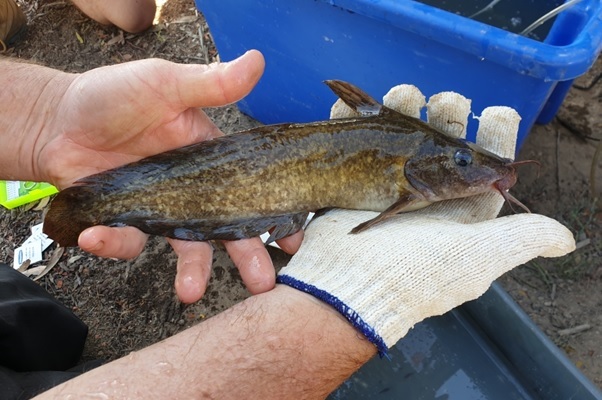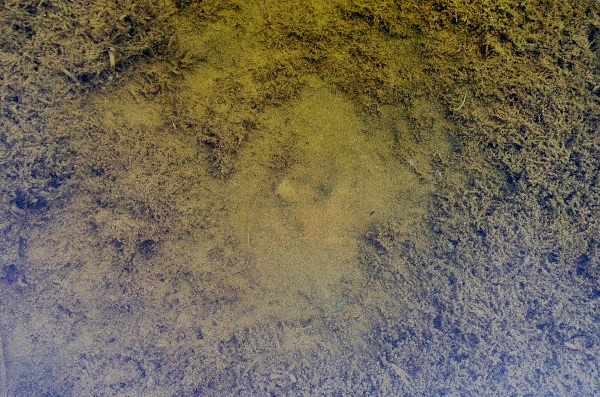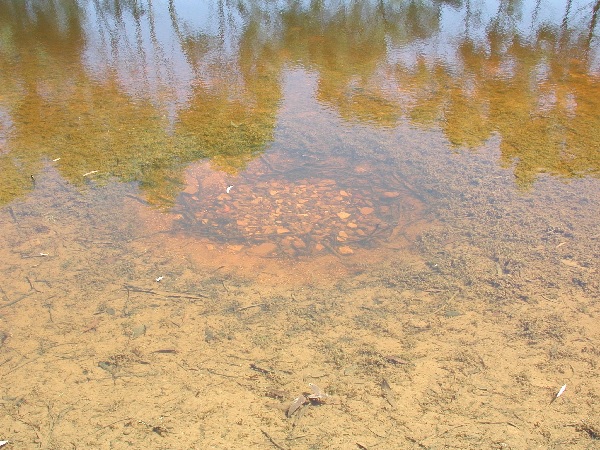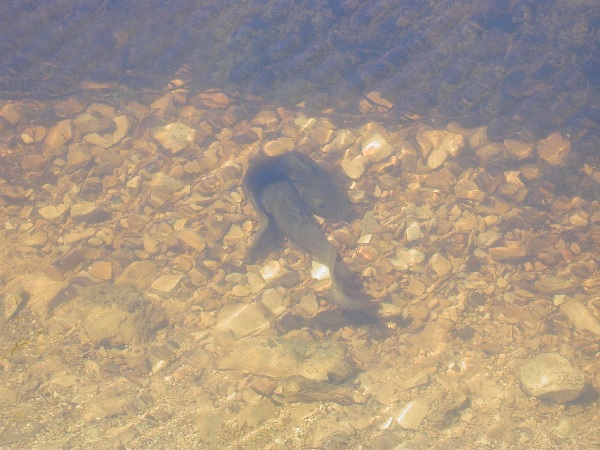Did you know freshwater catfish (Tandanus tandanus) are native to Australia?
With their large fleshy lips, whiskery barbels and eel-like tail, freshwater catfish make for a bit of an odd-looking fish.
Juvenile catfish are commonly grey-brown in colour, while adults are typically olive-green or brown with white bellies.
Their colour can however vary, depending on the characteristics of the waterbody they are found in.
Fun facts
- Freshwater catfish use their barbels to help them smell and find food. In dark murky water their barbels are much more useful than their eyes.
- Commonly, freshwater catfish grow to about 45 centimetres and weigh up to 2 kilograms!
- Unlike most fish they do not have scales, instead they have smooth slimy skin – just like an eel!
- Be careful, freshwater catfish have strong barbed spines on their dorsal and pectoral fins. These spines can cause nasty wounds.

Freshwater catfish, by Renae Ayres, ARI
Freshwater catfish were once widespread in eastern Australia but have undergone severe decline across much of their range, particularly since the late 1970s and early 1980s.
In Victoria the species is listed as threatened under the Victorian Flora and Fauna Guarantee Act 1988 and classified as endangered.
A variety of factors have contributed to their decline including:
- damage, modification and reduction of available habitat
- altered flow regimes
- barriers to movement such as weirs and locks
- predation
- competition with invasive species, such as carp, that occur in similar habitats
Freshwater catfish are largely carnivorous and enjoy feeding on insects, molluscs, crustaceans, fish and bugs.
They are found in a range of habitat types including rivers, creeks, lakes and billabongs, as well as weir pools and farm dams.
Places with slow moving waters, cobble or gravel substrates, water plants, and instream woody habitat, such as fallen logs provide good habitat to breed, feed and thrive.
Most freshwater catfish do not tend to move very far (less than 500m), although some can travel much larger distances, including during flow releases.
Up to a month prior to spawning males build circular nests from materials that are available, such as, course sand, gravel, small sticks or even just creating a small depression in the river bed. The size and extent of nests can vary extensively, sometimes they can reach up to two metres in diameter!


Variable difference in freshwater catfish nests. Top small muddy depression, by Pam Clunie, ARI. Bottom gathered sticks and cobble stones forming a well-constructed nest to lay eggs, by Grant Boyle
Males entice females to the nest – if you are lucky and the water is clear, you might be able to see their courtship behaviour of weaving and circling.

Two freshwater catfish during courtship, by Grant Boyle
The female then lays her eggs in the middle of the nest, and the male actively protects the eggs and larvae by chasing off predators and uses his tail to fan away sediment.
Their nests tend to be placed along shallow margins of waterbodies, and they spawn through spring and summer when the water temperature is warm, ideally between 20-24 degrees Celsius.
How do environmental flows support freshwater catfish?
- Environmental flows can help prevent declines in water quality helping to create a habitat that catfish can survive and breed in, however, it is important to carefully manage water releases, really strong flows or rapid changes to water depth may cause adult catfish to abandon their nests.
- Water for the environment helps to create a habitat the freshwater catfish like to live in by supporting the growth of water plants and maintaining water levels.
- Environmental flows help maintain a productive food web which increases diet opportunities.
- Maintaining water levels and river flows between pools, floodplains and wetlands. While many freshwater catfish tend to have limited ranges, they also like to move between floodplain and riverine habitats.